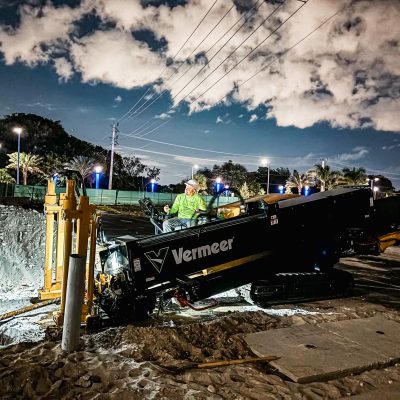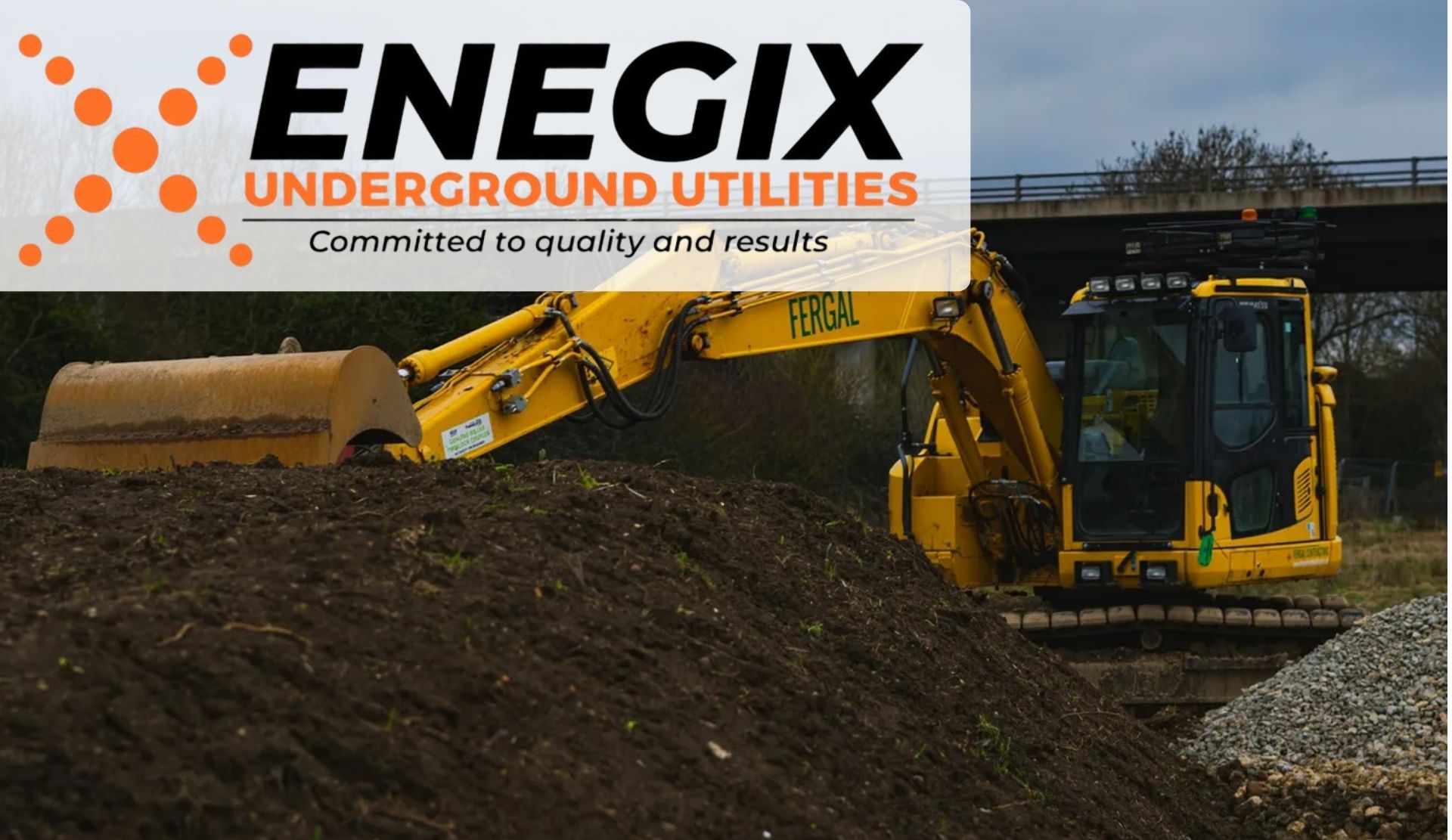
Underground construction projects necessitate the right choice of drilling method. Directional drilling and auger boring are two prevalent techniques, each with distinct advantages tailored to different project needs. This article dives into what makes each method good, how they’re alike, and how they’re different. This will help you figure out which one is the best fit for your project.
Advantages of Directional Drilling
- Minimal surface disruption: One of the most significant advantages of directional drilling is its minimal impact on the surrounding environment. This method requires only small entry and exit pits, which means less surface disturbance compared to traditional open-cut methods. This is particularly beneficial in areas with existing structures, landscaping, or environmentally sensitive regions.
- Longer and deeper installations: Directional drilling is capable of achieving longer and deeper installations compared to auger boring. This method can easily handle distances over 1,000 feet and depths exceeding 50 feet. The ability to drill longer distances and at greater depths makes directional drilling an excellent choice for projects that require extensive underground installations.

- Curved paths: Another advantage of directional drilling is its ability to create curved paths. This feature is particularly useful when navigating around obstacles, such as existing utilities, buildings, or natural features. The flexibility to drill in a curved path allows for greater versatility in project design and can help avoid costly relocations or disruptions to existing infrastructure.
- Suitable for various soil conditions: Directional drilling can be used in a wide range of soil conditions, including rock formations. The method utilizes a specialized drill head and drilling fluid to cut through various soil types and maintain the integrity of the borehole. This adaptability makes directional drilling a reliable choice for projects with challenging soil conditions.
When to Use Directional Drilling
– Long-distance installations (over 1,000 feet)
– Deep installations (over 50 feet)
– Curved or complex paths
– Environmentally sensitive areas
– Rock formations or challenging soil conditions
– Projects that require minimal surface disruption
– Installations beneath rivers, highways, or other obstacles
Advantages of Auger Boring
- Cost-effective for shorter distances: Auger boring is generally more cost-effective than directional drilling for shorter installation distances. This is because auger boring requires less specialized equipment and has lower setup costs. If your project involves installing utilities or pipelines over a shorter distance (up to 1,000 feet), auger boring can be a more economical choice.
- Faster installation: In suitable soil conditions, auger boring can be completed more quickly than directional drilling. The auger boring process involves simultaneously excavating and installing the casing or product pipe, which can lead to faster completion times. This can be advantageous for projects with tight deadlines or when minimizing construction duration is a priority.
- Less fluid usage: Compared to directional drilling, auger boring typically requires less drilling fluid. The auger boring process relies on the mechanical action of the auger to excavate the soil, rather than the use of high-pressure drilling fluid. This can be beneficial in areas where the disposal of drilling fluid is a concern or where there are environmental restrictions on fluid usage.
When to Use Auger Boring
Short-distance installations (up to 1,000 feet)
Shallow installations (less than 50 feet)
Straight paths
Stable soil conditions
Projects with tight deadlines and budget constraints
Installations requiring precise alignment and grade control
Projects with limited space for equipment setup
Factors to Consider When Choosing Between Directional Drilling and Auger Boring
Project distance and depth: Consider the total length and depth of the installation. Directional drilling is more suitable for longer distances and deeper installations, while auger boring is more cost-effective for shorter and shallower projects.
Path complexity: If your project requires a curved or complex path, directional drilling is the better choice. Auger boring is best suited for straight paths.
Path complexity: If your project requires a curved or complex path, directional drilling is the better choice. Auger boring is best suited for straight paths.
Soil conditions: Evaluate the soil conditions at the project site. Directional drilling can handle a wider range of soil types, including rock formations, while auger boring is more suitable for stable soil conditions.


Leave A Comment